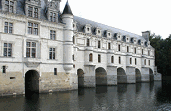|
Although he never forgot about this so called entertainment at
the expense of others, it was not until a few years later that Valentin came upon an idea
of how to help the blind. It was after giving a young blind beggar some coins and
watching him feel the raised markings on the coins that he thought about books being
written that were with raised lettering, so that even they could become educated using
their fingers rather than their eyes.
The young blind lad was called Francois Leseuer and Valentin Hauy took pity on him and
decided to take him off the street and provide him with food and shelter and by making up
wooden blocks with raised letters and numbers, he also taught Francois to read.
Through the success of teaching Francois to read, Valentin changed his life and put his
resources into the education of blind children, so they would not have to suffer like
Francois had once done, and he started to develop a way of being able to print books with
raised lettering, so that blind people could learn to read with their fingers.
Then in 1784 he opened a school for the blind in Paris,
which was in fact the first school of its kind throughout the world and Francois Leseuer
became one of the teachers at the school.
The children didn't just study at the school, they lived there as well, and after a while
even King Louis XVI had heard of the place and summoned Valentin plus some of his blind
students to the Chateau de Versailles to show off
their reading skills that they had acquired. King Louis was very impressed with the
children and what they had been able to learn and the school was from then on named the
Institution Royale des Juenes Aveugles or in English known as the Royal Institute for
Blind Youth.
However, when the Royal Institute for Blind Youth was taken over by the State during the
French Revolution, Valentin was forced to give up his position as director and he decided
to leave France.
He travelled to Russia and whilst he was there he set up the first school for the blind in
St Petersburg and his work started to get known all over Europe with schools opening in
other countries such as Austria, Denmark, the United Kingdom and Germany.
It was not until the year 1817 that Valentin Hauy returned to Paris, but unfortunately the
director of the institute did not allow Valentin to even visit and he lived by himself in
an apartment near to the school that he had founded well over forty years prior.
But when a new director took over and he learned of how Valentin had been treated, the new
director decided to welcome him back to the school with a celebration in his honour.
This major celebration was held in 1821, and many of the students that participated in the
celebrations were in awe and admiration of this now elderly gentleman. One of these
pupils that had a lasting impression from the day was in fact Louis Braille, whom you may recognise as the
person that developed the Braille that we know today.
Valentin was full of thanks and gratitude when chatting with the students who were at the
institute, but unfortunately, he died only months later in the March of 1822 and is buried
with his brother in the Cimeti?re du P?re-Lachaise in Paris. Yet his pioneering
work is still remembered through the museum that is dedicated to him called the Musee Valentin Hauy.
|
|



